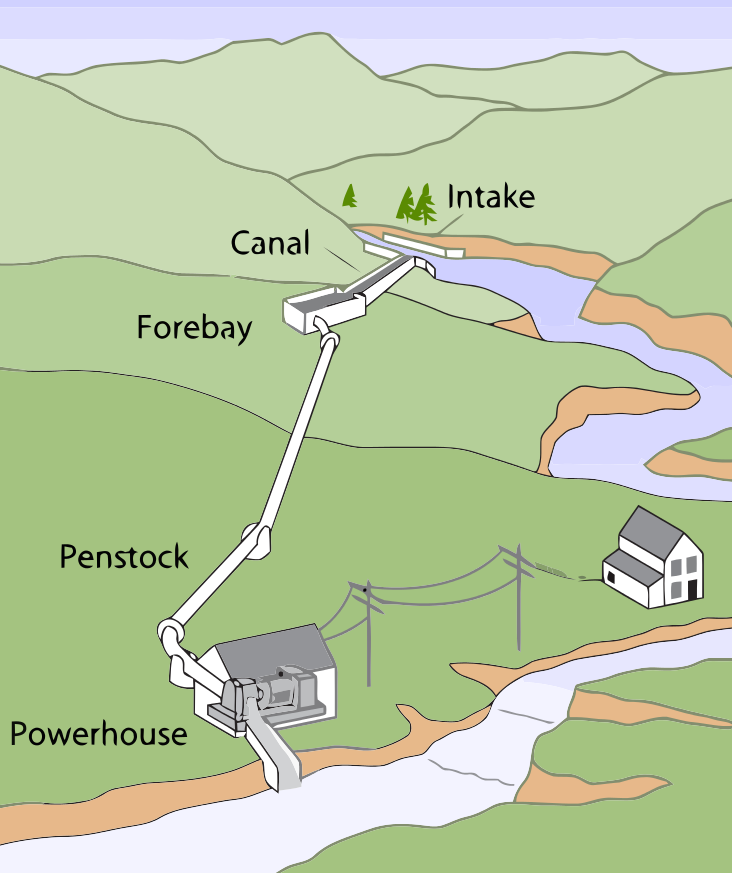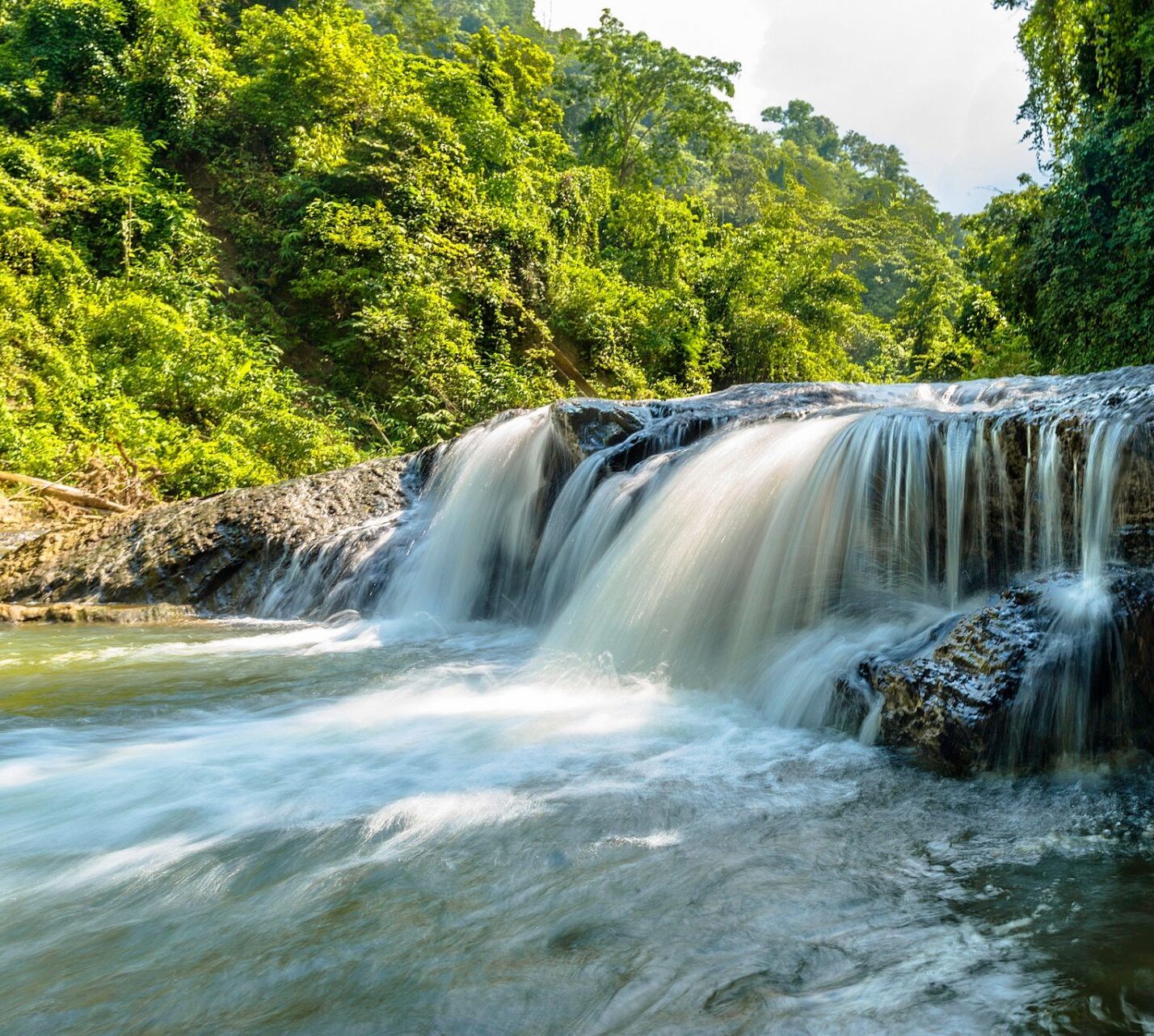Selecting the Right System
Choosing the right type of micro hydropower system for your site depends on its unique physical characteristics and conditions.
As water flows downstream, its gravitational energy can be converted into electric power by a hydroelectric system. Many smaller rivers and streams are capable of providing micro-hydro power for local use and to be fed into the public utility grid. While system layout and the used components are very site specific, common components that make up a micro hydropower system include:
Common components that make up a micro hydropower system include:

Intake
Structure that diverts water from a natural waterway into the penstock.
Canal
Structure that moves water from the intake to the forebay or turbine.
Forebay
reservoir from which water is taken to run the turbine.
Impoundment
Body of water created by a structure that obstructs flow, such a a dam.
PENSTOCK
Closed conduit or pipe for conducting water from the intake and/or forebay to turbine.
POWERHOUSE
Structure that houses generators, turbines and other equipment at a hydropower facility.
TURBINE
Mechanical device that extracts energy from a water flow and converts it into a rotary movement to spin a generator.
To help dam owners and owners of potential dam-free micro hydropower sites assess their micro hydropower potential and design their general system layout, we’ve developed a Micro Hydropower Decision Making Framework, in the form of a flowchart, which is based on lessons learned throughout the demonstration micro hydropower project at Bard College. The Decision-making Framework aims to assist interested parties in navigating their micro hydropower options and focuses on a project’s technological feasibility, considering the starting point (i.e. existing dam, no dam, other infrastructure), key decision points and potential fatal flaws (i.e. head, flow, proximity to utility infrastructure, system size), and will ultimately suggest a micro hydropower design. The visual flowchart will assist navigation for stakeholders who have taken the option to install micro hydropower focusing on technical feasibility and potential “fatal flaws”. A detailed description of various self-assessment steps and options, as well as recommendations and necessary considerations are provided in the tool’s guidebook.
- Flow Chart for Dam Owners
- Flow Chart for Dam-Free Micro Hydropower
-
Complete Micro Hydropower Decision Making Framework (Guidebook and Flowcharts)
Site Survey Checklist
Before getting started on technology selection, it’s important to understand your site. Use this checklist to make sure you understand the characteristics of your site and it’s potential for microhydro. While understanding environmental impacts of microhydro is a priority, it is also critical to make sure your site is suitable for a microhydro system before moving further along in the process.
If your site is suitable, the next steps include following local, state, and federal regulatory requirements, as well as determining how you will finance the installation and ongoing maintenance of the system.
Checklist
- Environmental Impacts
- Measure head
- Measure site flow
- Calculate estimated power


Site Restrictions & Considerations
Water Use Restrictions
There may be laws that restrict the amount of water that can be diverted from a stream, either permanently or temporarily, requiring a system to limit water input.
Stream Wildlife
Many streams support fish and other wildlife whose habitat could be affected by the installation of a micro-hydro system.
Streamside Equipment
The size and environmental impact of any micro-hydro installation has to be considered, both for its construction and its operation. Other disturbance of existing ecosystems, should also be evaluated (see Environment for more).
Technology Posts
The latest articles on the technological impact of microhydro power.



